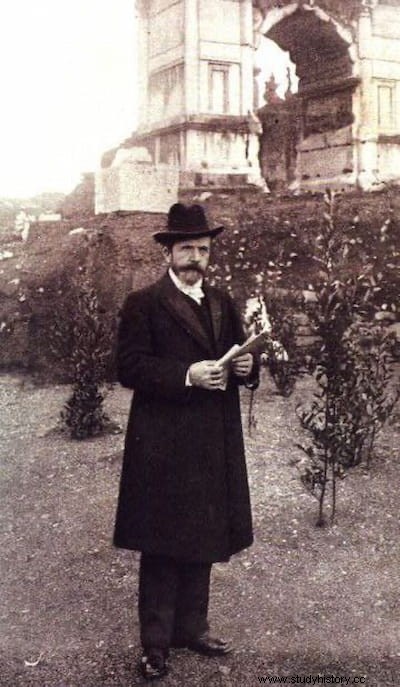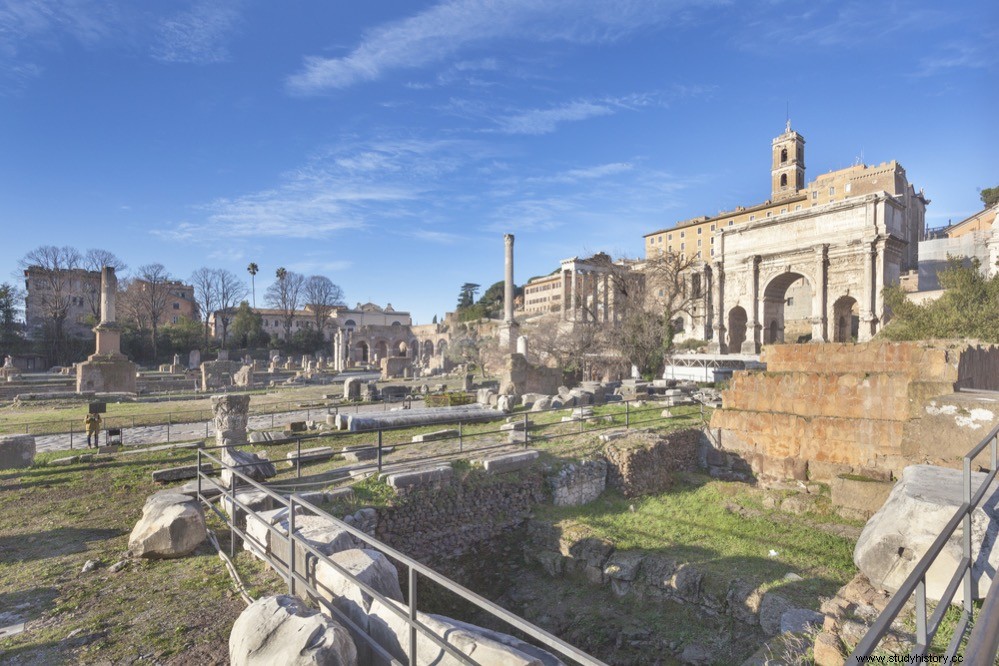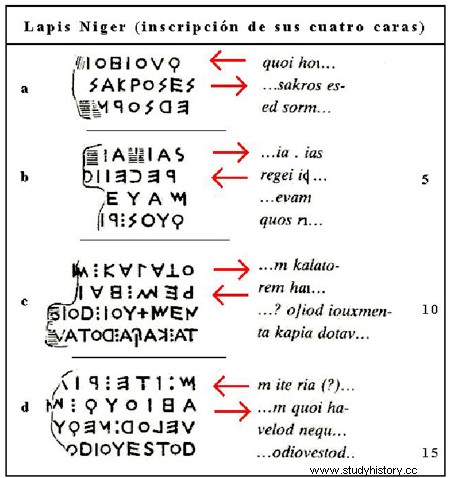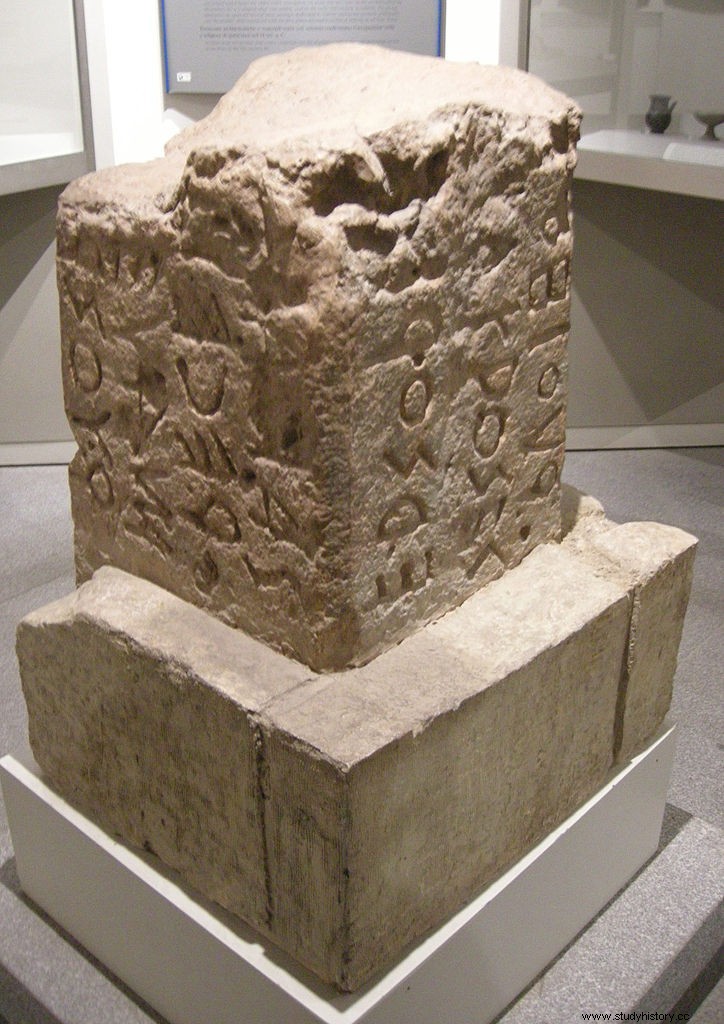In 1898 the Venetian archaeologist Giacomo Boni was appointed director of the excavations of the Roman Forum in the Italian capital, a position he held until his death in 1925.
Among the finds he made during that period are an Iron Age necropolis, the Regia (first a barracks and then the seat of Rome's Pontifex Maximus), the Temple of Vesta, and other monuments.
One of the most outstanding discoveries of his in the Forum is the Lapis Niger (black stone in Latin), an ancient sanctuary in which one of the earliest known Latin inscriptions was found, dated between 570 and 550 BC.

This sanctuary, although considered a sacred space, was a mystery to the Romans themselves already at the time of Julius Caesar. It was part of the old Comitium (comicio), the public meeting space of the curiate assembly located in the northwest corner of the Forum.
It could have been precisely in the time of Julius Caesar (or earlier in the time of Sulla, dictator between 81 and 80 BC, according to other experts) when it is believed that this sanctuary was reformed, building a new structure with black marble flooring.
What was really interesting was what it covered, because below, at a depth of one and a half meters, Boni found the aforementioned inscription and an ancient tomb that, as we said, already in the time of Caesar the Romans had forgotten who it belonged to.

What they did know is that the place was important and therefore sacred, so generation after generation revered it and kept it intact. As they did not know who was buried there, several stories arose, conjectures that soon became legends.
According to one of them it would be the tomb of Romulus, the founder and first king of Rome, assassinated in the temple of Vulcan that was next to the Lapis Niger .

According to other stories, it could be the tomb of Hosto Hostilio, the grandfather of King Tulio Hostilio (third king of Rome between 673 and 642 BC), and who was one of the celeres , Romulo's personal escort; or also the place where Faustus, the shepherd who found and raised Romulus and Remus, perished in battle.

As you can see the common denominator of all these conjectures is Romulus. The problem is that nothing inside the Lapis Niger can confirm (or disprove) this association. In fact, the first ancient sources that mention it already question the legends, and are inclined to affirm that it was probably the place where the kings addressed the people and the senate.
What Boni's excavations found, in addition to the inscribed pillar, were numerous pottery shards, votive statuettes, and evidence of ritual animal sacrifice, all under a layer of gravel with which it had been intentionally covered. The dating of all these remains places them between the 5th and 7th centuries BC. That is to say, at the earliest, just at the time of Romulus' death and at the beginning of the reign of his successor Numa Pompilius (716-674 BC), who was also Romulus' brother-in-law.

The place suffered several vicissitudes during the following centuries, such as fires and partial destruction due to wars and invasions, until it was reformed in the 1st century BC, when a more modest altar with a black marble pavement was built on it.
As for the inscription, it is, as we said, the oldest known so far in Latin. But it has a number of peculiarities. In the first place, the alphabet with which it is written is more similar to the Greek than to the Latin, which places it chronologically in the origins of the latter. Then, it is written in boustrophedon, an archaic type of writing that consists of writing one line from left to right and the next from right to left or vice versa.
And finally, the interpretation of what it says is limited because the beginning and the end of the inscription are missing and the rest is barely half of each line. But what can be read seems to indicate that the site was dedicated to a king (rex ). The transcription of the four faces of the pillar would be:
And the generally accepted translation:

The importance of this inscription lies in the fact that for the first time epigraphic evidence was discovered that Rome had once had kings. Something that the classical sources cited but that had never been verified.
Whether Romulus or another of those kings was buried under the sanctuary is something we will probably never know. What almost all experts agree on is that Lapis Niger It must have been a founding monument of the city of Rome, around which the assemblies of the Roman people were held since very remote times.
